After a day of rest, it was time to go, although my health
has not improved. I say goodbye to my Friends Ab and Ineke and ride south along
the coast of Zealand following the sea-dyke route via a steel barrier dam and a
very long bridge until I get to a long tunnel under the Westerschelde, which is
the primary entrance to the harbour of Antwerp
.
Yesterday, near Rotterdam, we viewed a new area under development called
the “Maasvlakte 2”. Similar to Brisbane a large area is created by spraying
sand into the sea followed by digging it out and shaping it into an extensive harbour
of 10 km2
All of this to beat the completion from Antwerp and Hamburg.
I reappear into the light at the end of the tunnel near the
town of Terneuzen and cross the Belgium border soon after.
Bypassing Gent, I get
off the main road and head for the city of Lille.
When I bought the bike, it was fitted with a TomTom Rider navigation
which was new to me in the operation of it. As I had no time to acquaint myself
with it, I had fitted my usual navigation unit as well. Now it was getting
amusing. Several times I came to a crossroad
where one GPS tells me to turn left and the other to turn right. However, the
road sign tells me… to go straight on.
I pass the city of Arras in northern France and notice a
sign which tells me that the road runs along the WW1 front line of the battle
of the Somme. Usually I go looking for these place like I had done in Belgium
years before, however, today I just stumble upon it. The names of the towns I
pass sound familiar.
Many of them are now part of Australian history. Several towns
in Australia bear the same name. Also, I know the names as they are displayed
in the large memorial in Brisbane.
The first tow which came was Bapaume followed by Pozieres
where I stop at an Australian memorial and a large cemetery further down the
road. In Australia, we tend to focus on the Anzacs.
Here, there are large cemeteries for Canadians, English, Indians,
Polish etc. In another famous town (Albert)
I turn left onto a road that leads the town of Villers Bretonneux where I stop to
take a picture of the sign with the towns name on it. While doing so, a man,
who observes what I am doing, waves at me from his balcony. He probably sees
this at regular intervals and thinks- another Aussie visits town. In Villers Brettoneux they celebrate Anzac
day like we do in Australia on April 25. Although it is now a long time ago the
town is still appreciative of the sacrifices paid just like the town of Ypres in
Belgium which I visited a few years ago.
It is hard to imagine
that the annual early morning service held in every Australian town on April 25,
which is always very moving and somewhat emotional is held EVERY Day at 7 pm, in the Belgian town of
Ypres. The service feels like an annual event and includes a military band in
honour of the Anzacs who lost their lives fighting for their town.
The memorial in Villers Bretonneux is enormous. Many graves
have no name, and one grave is now empty when the body was removed in 1993 and
placed in the tomb of the Unknown Soldier at the war memorial in Canberra. 300.000 Australian Soldiers served in Belgium
and France, 46.000 died, 11.000 have no known grave. 132.000 were wounded. You could easily spend
a week visiting all the sites and museums.
I continue to Amiens and Rouen following the country roads
flanked by red poppies and reach Lisieux. Now I face the usual challenge. My
friends Jerome, Daniela and family live in a tiny village of Juvigny sur
Seulles. (Seulles being the name of a small river) on the other side of the
city of Caen.
One GPs has never heard of it. My paper map does not show it,
and my other GPs points to a general area. The address is a road without a
number which doesn’t help much. I know the approximate location and do a few sweeps
of the area. On a crossroad, I notice a farmer tending to his machinery and enter
his farm to ask him the way.
A barrage of French words enter my helmet, the
only words I understand is “ a gauche” and when I give him an empty stare he
repeats it pointing with his left arm “a gauche-a gauge”, holds up two fingers
and say “Deux”. Ok, I get it. Follow the road and turn left two times. He sends
me on my way with a smile.
Soon I pass the castle and recognise where I am. It is 9.15 pm, the sun is still shining, and
dinner is waiting. Great to be back.

 Juvigny-sur-Seulles, Normandy, France
Juvigny-sur-Seulles, Normandy, France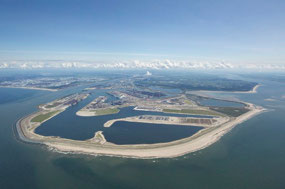
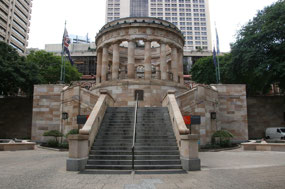
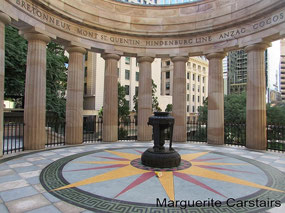
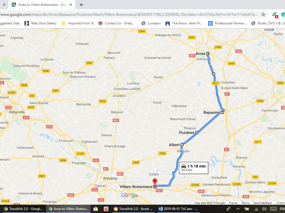
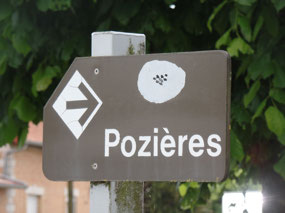
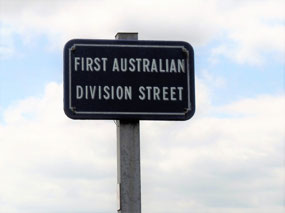
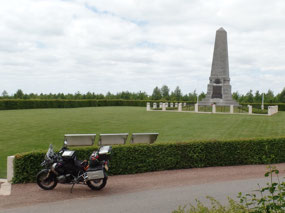
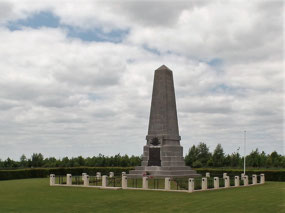
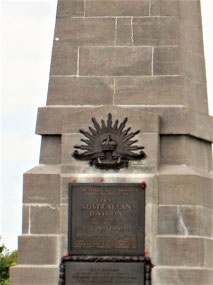

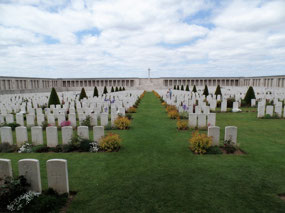











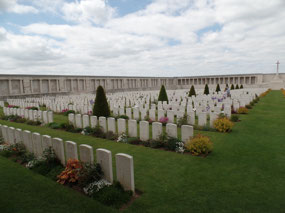
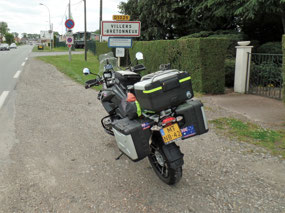
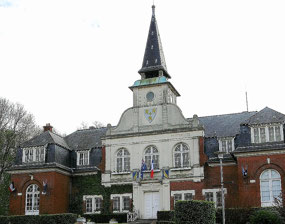
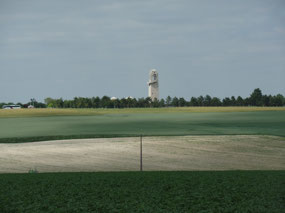
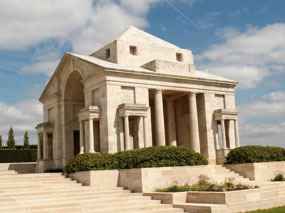
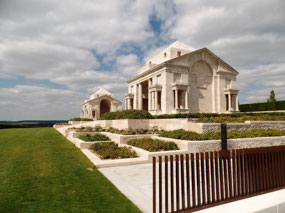
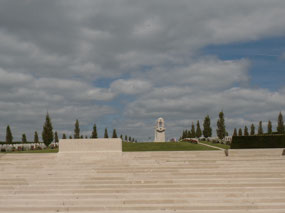
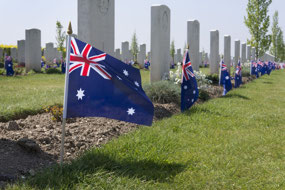
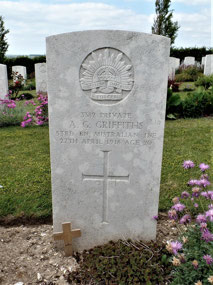
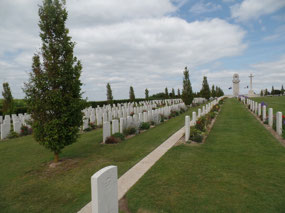
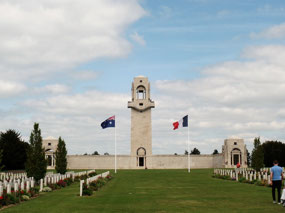
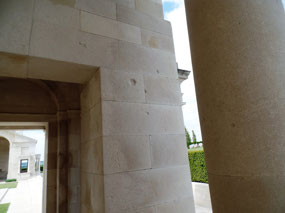
Arno Gorissen
2019-06-03
Hi Richard Tragic memory lane, all these cemetries in Belgium and France (WW1 and WW2) with all these young lads that died. In Flanders fields the poppies blow Between the crosses, row on row, That mark our place; and in the sky The larks, still bravely singing, fly Scarce heard amid the guns below. We are the Dead. Short days ago We lived, felt dawn, saw sunset glow, Loved and were loved, and now we lie, In Flanders fields. Take up our quarrel with the foe: To you from failing hands we throw The torch; be yours to hold it high. If ye break faith with us who die We shall not sleep, though poppies grow In Flanders fields. John McCrae All the best on your never ending adventurous road trip
richard.wolters
2019-06-03
Thanks Arno.Wow that you knew this poem. Hope to see you when I get back to Ned.
Nat
2019-06-03
So sad to think about all that history. So you’re still not well? Are the antibiotics not working ?
gertroos
2019-06-03
Indrukwekkend Richard! Wat een afschuwelijke geschiedenis. Hoop dat je je snel beter gaat voelen, zien we je nog in Zoetermeer verschijnen?
Craig Wilson
2019-06-03
Any history is amazing, keep the blog coming I love the trip info you put up and the photos. Thank you
Steve Muir
2019-06-04
Interesting to hear of the daily service to the fallen in Ypres. My grandfather was shot by a sniper at Ypres ... he survived but was plagued with difficulty in walking for the rest of his days till 1956. A great travelogue ... keep them coming mate. Stay upright Steve
Hans van der Drift
2019-06-05
Hi Rick thanks for the Great story and Photos very interesting i hope you get better soon and Stay Save